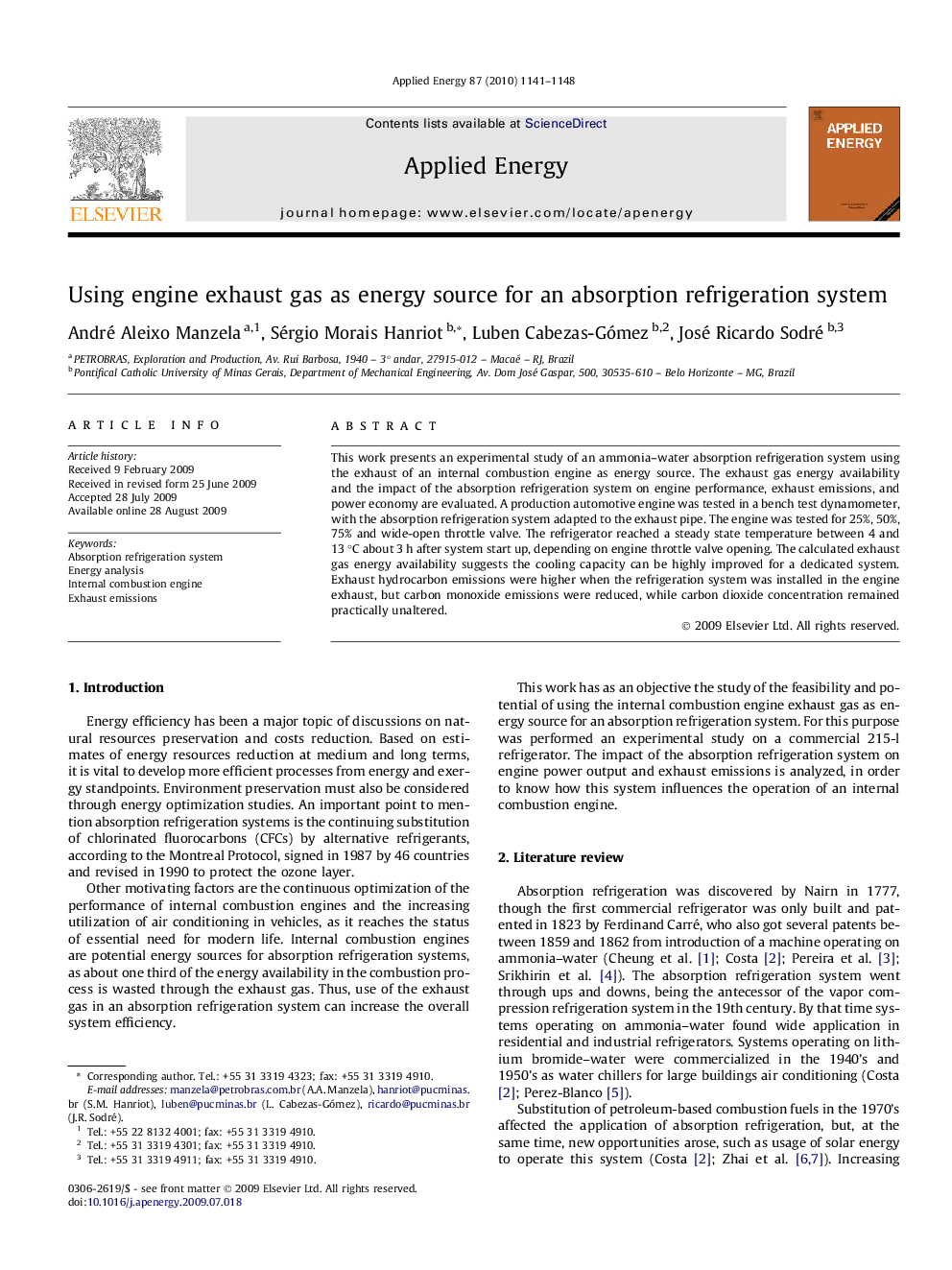| Article ID | Journal | Published Year | Pages | File Type |
|---|---|---|---|---|
| 244622 | Applied Energy | 2010 | 8 Pages |
This work presents an experimental study of an ammonia–water absorption refrigeration system using the exhaust of an internal combustion engine as energy source. The exhaust gas energy availability and the impact of the absorption refrigeration system on engine performance, exhaust emissions, and power economy are evaluated. A production automotive engine was tested in a bench test dynamometer, with the absorption refrigeration system adapted to the exhaust pipe. The engine was tested for 25%, 50%, 75% and wide-open throttle valve. The refrigerator reached a steady state temperature between 4 and 13 °C about 3 h after system start up, depending on engine throttle valve opening. The calculated exhaust gas energy availability suggests the cooling capacity can be highly improved for a dedicated system. Exhaust hydrocarbon emissions were higher when the refrigeration system was installed in the engine exhaust, but carbon monoxide emissions were reduced, while carbon dioxide concentration remained practically unaltered.
